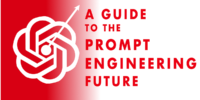Welcome to the enthralling world of quantum computing, where qubits dance in superposition, and algorithms harness the power of parallel universes to solve complex problems. In this quantum computing quandary guide, we’ll embark on a journey to unravel the mysteries of quantum problem-solving. ️♂️
Navigating the Quantum Landscape
Quantum computing leverages the principles of quantum mechanics to perform computations that classical computers find challenging or practically impossible. To navigate this quantum landscape effectively, consider the following quick tips for quantum problem-solving.
Quick Tips for Quantum Problem Solving
5. Master Quantum Gates: Quantum gates are the building blocks of quantum circuits. Understanding and mastering these gates, like the Hadamard and CNOT gates, is crucial for designing effective quantum algorithms.
4. Embrace Quantum Parallelism: Unlike classical bits, quantum bits (qubits) exist in superposition, allowing algorithms to process multiple possibilities simultaneously. Embrace and design algorithms that leverage quantum parallelism for enhanced efficiency.
3. Handle Quantum Entanglement: Quantum entanglement is a unique phenomenon where qubits become correlated and the state of one qubit directly influences the state of another, regardless of distance. Design algorithms that harness entanglement for interconnected problem-solving.
2. Explore Quantum Algorithms: Quantum algorithms, such as Shor’s algorithm for factoring and Grover’s algorithm for search, showcase the extraordinary capabilities of quantum computers. Explore and adapt these algorithms for your specific problem-solving needs.
1. Overcome Quantum Error Correction: Quantum computers are susceptible to errors due to their delicate quantum states. Familiarize yourself with quantum error correction techniques to ensure the reliability of your quantum computations. ️
The Inverted Pyramid of Quantum Mastery
Imagine your journey in mastering quantum problem-solving as an inverted pyramid. Start with understanding and mastering quantum gates, then move on to embracing quantum parallelism, handling quantum entanglement, exploring quantum algorithms, and finally, overcoming quantum error correction challenges. This inverted pyramid approach magnifies your proficiency in navigating quantum quandaries.
Embracing Quantum Problem-Solving
In conclusion, the world of quantum computing presents both challenges and incredible opportunities for problem-solving. By incorporating these quick tips and embracing the quantum landscape, you’ll find yourself equipped to explore the limitless potential of quantum problem-solving. Here’s to unraveling the mysteries of the quantum realm!








